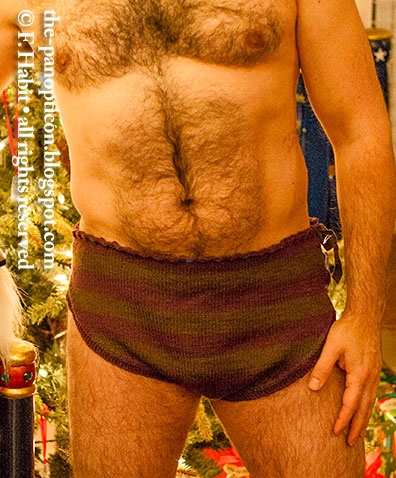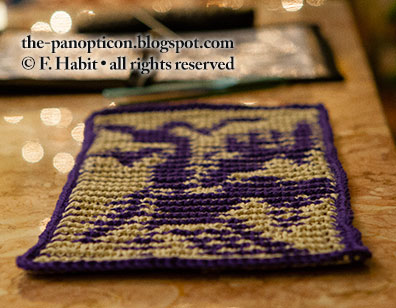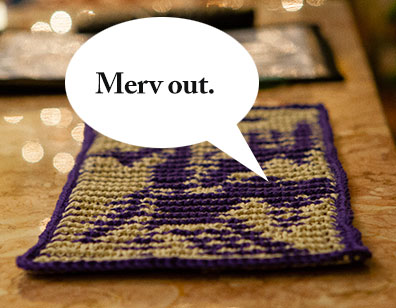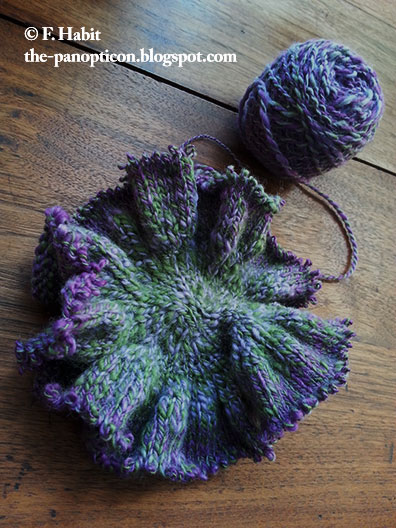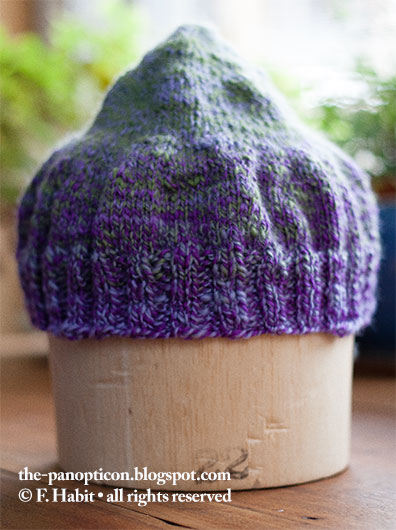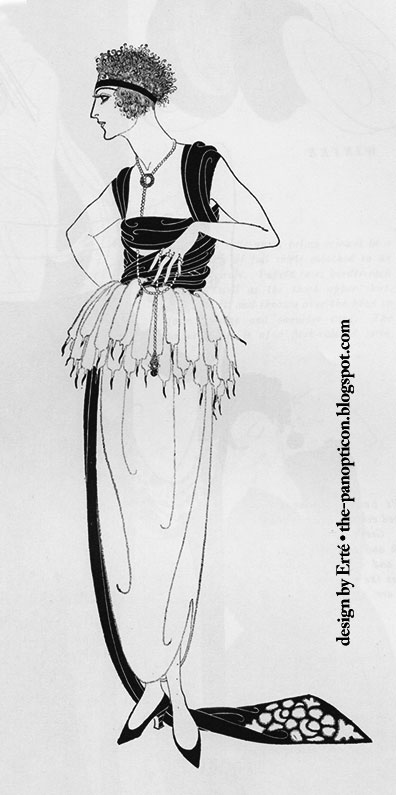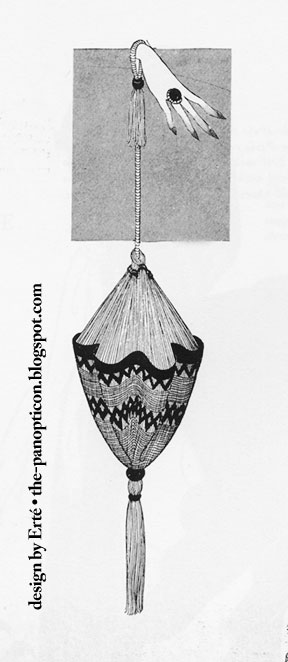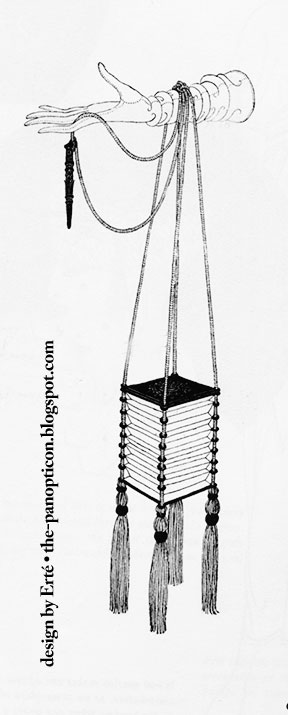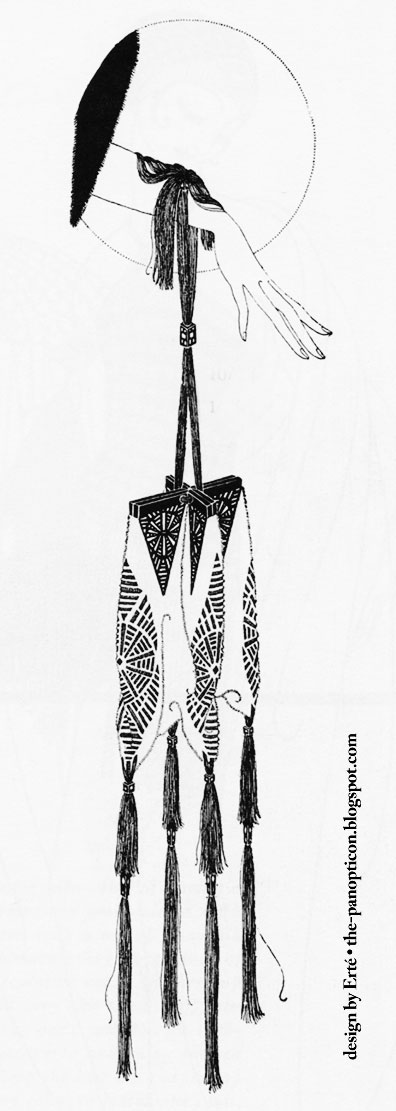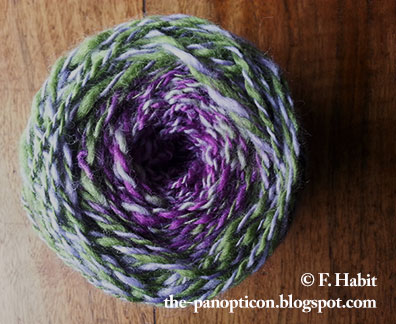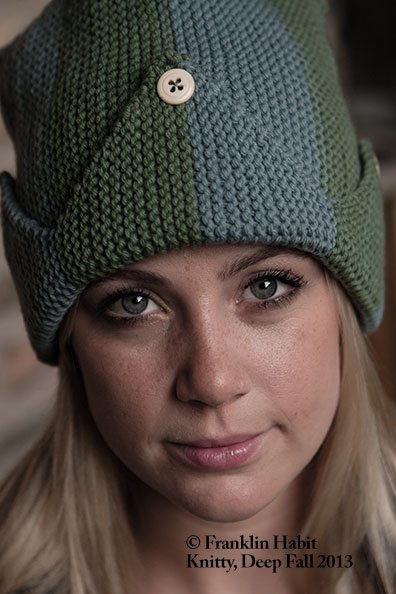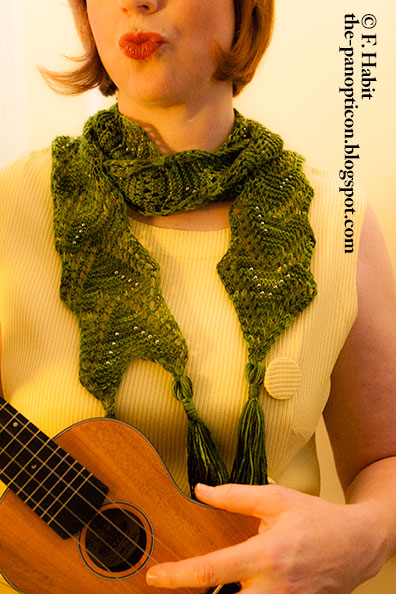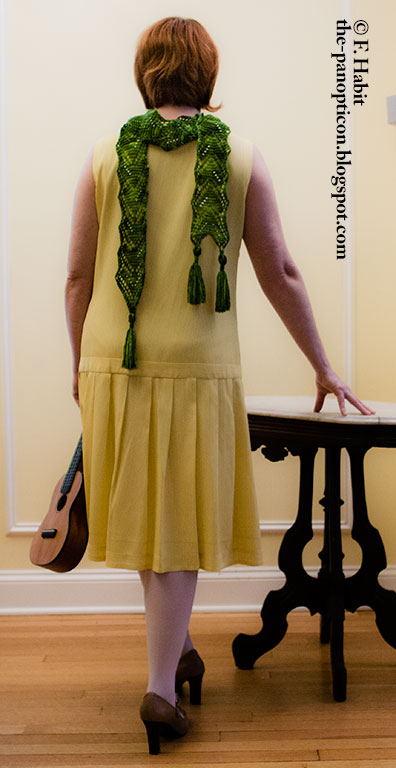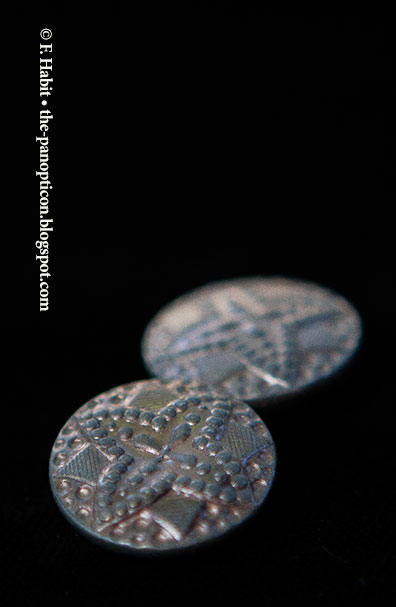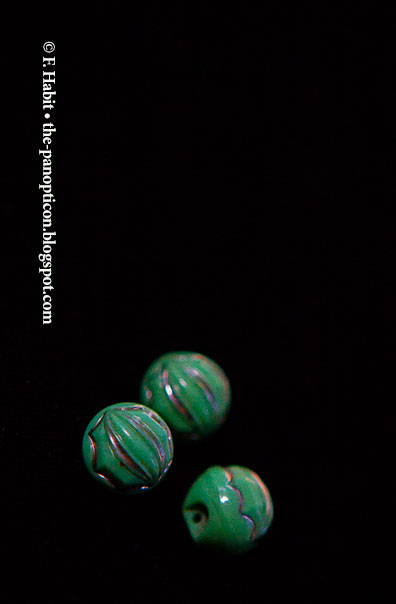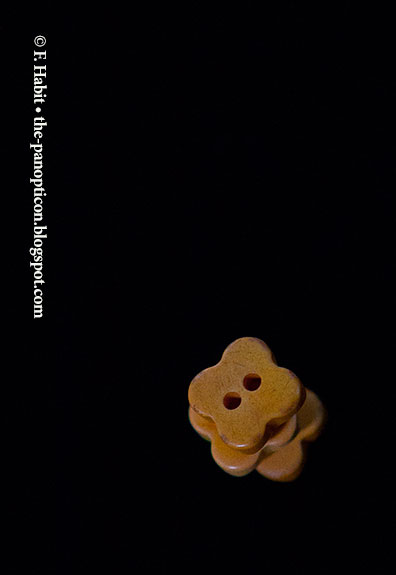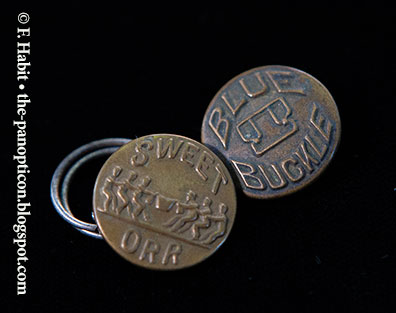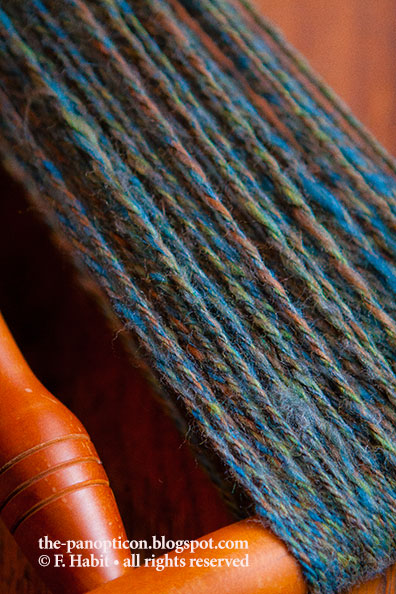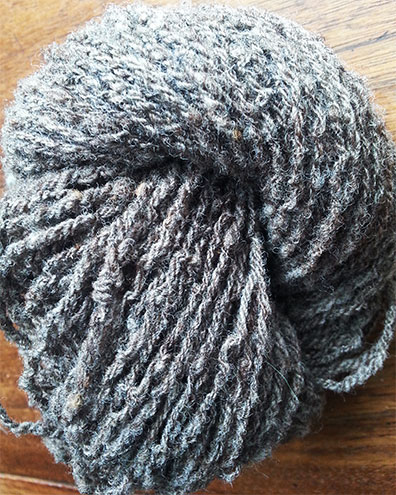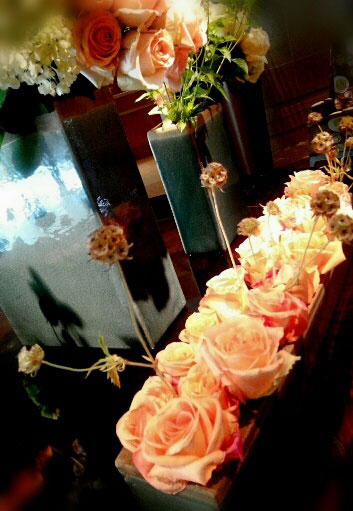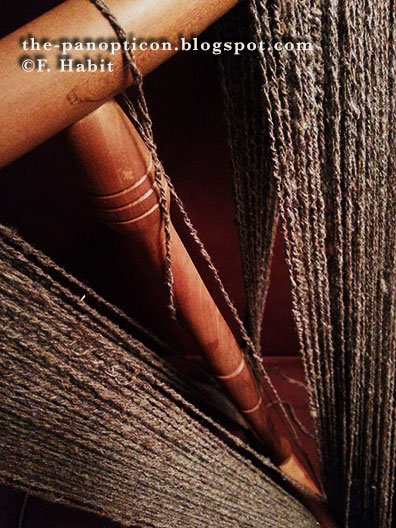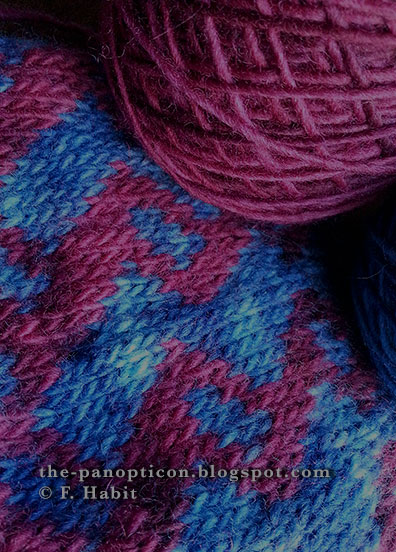The idea of knitting bathing costumes had interested me since I first saw pictures of two made by Elizabeth Zimmermann (one for herself, one for her husband) in her lovely memoir Knitting Around. I thought it was interesting that knitted suits had been ubiquitous, and then gone. Usually outmoded styles of dress take time to fade away completely. Those who are long accustomed to a cut or style, especially those of a certain age, are often slow to give them up. But it seemed that knitted bathing suits, once other options became available, vanished virtually overnight.
Why? Could they really have been that awful?
When I announced the drawers project, several folks who had personal experience of the suits came forward to assure me that yes, they were that awful. The itched, they stretched, the stretched-out crotches filled up with sand, they smelled like wet dogs, and so forth. Nobody, not one person, remembered them with anything like fondness.
I didn't set out to make the drawers expecting them to replace my lycra suits and (spoiler alert) they sure haven't. However, I wanted to know, first-hand, what a knitted wool suit was like. This sort of curiosity about What Once Was is the reason people become historians–either the real kind, or my kind of passionate amateur.
You would not believe some of the mail I've had about this. Most bewildering were those insisting that the suit was too brief and revealing to be authentic to the 19th century. These messages persisted after I posted the photogravure from the original pattern:

They persisted after I posted this photograph of a men's bathing club in Brighton, England in the mid-19th century:

Some people will insist on re-writing the past to suit their modern ideas, even in the face of conclusive evidence. The human brain is a curious thing. I wrote about the phenomenon to a fuller extent in this post.
I promised to show myself wearing the drawers in here once they'd been revealed to the folks on the cruise. I promised it with a lump in my throat and a pit in my stomach, and my worst fears were pretty much immediately confirmed.
I am not a person who is confident in his looks. I never have been. It wasn't uncommon when I was child for adults to make critical remarks about my appearance–openly and within my hearing. Sometimes directly to me. I was described at various times by teachers, strangers, and blood relations as being (these terms are verbatim) way too dark, too swarthy, green-skinned, yellow-skinned, big-nosed, scrawny, tubby, husky, dwarfish, awkward, big-assed, funny-looking, or just plain unfortunate.
Then I reached adolescence, and things got worse. I was pimply, hairy, and oily in addition to all of the above adjectives. For about twenty years I didn't look at myself in the mirror. Ever. Not once. I couldn't bear to. I avoided having my picture taken and when pictures were taken, if at all possible I destroyed the prints when I got my hands on them. I wore clothes two sizes too large to cover as much of myself up as possible.
I fell in love with the history of architecture, but felt guilty walking into beautiful buildings. On my first visit to Westminster Abbey, I stood in the nave and thought, "It's so magnificent, and you're standing in the middle of it and wrecking the view."
I had my worst fears confirmed repeatedly by my fellow gay men. This still happens all the time. I stand five feet, four inches (which is too short). My waist is about twenty-nine inches (which is too fat for my height). My eyes are brown, when they should be blue. My nose is big, when it should be aquiline. My skin is olive, when it should be white. I am hairy about the chest, when I should be shaved. I am bald, when I should have a full head of hair.
There have been a few times in the history of this blog when I've shown some part of me in a photograph. If you go back and find them, you'll notice they were always a punchline. Always. Because that is what my physiognomy is suited to, and I know it.
I know I'm not a swimsuit model. I know that.
Once somebody, entirely without my permission, lifted an image of my chest from a blog post and stuck it up in a men's group on Ravelry. I wandered into the thread–I was a member of the group–and found myself being discussed in a "hot or not?" sort of way. The overwhelming consensus was "not." That was a fun afternoon.
With all that in my past, it didn't please me to find a pack of comments in here (now deleted, and wouldn't you?) openly discussing my disgusting body. And yes, the word "disgusting" was used. So were the words "spare us." Apparently the commenters in question had seen my chest hair (disgusting) in a photograph from the Blue Lagoon in Iceland and were hoping that any and all shots of the bathing drawers were spare them more disgusting shots of disgusting me and my disgusting secondary sex characteristics. They also noted that I didn't have the body for the bathing drawers. One person helpfully suggested I hire a male model to show them.
I wonder what would happen if I commented publicly that some female knitter's waistline was too big, or that she was far too bony to show herself in that outfit, or that I found her enormous (or tiny) chest disgusting, or pointed out after she posted a sock selfie that it was high time her legs saw the business end of a Lady Schick?
I don't need to wonder what would happen. What would happen is that within ten minutes my career in knitting would be over. Women, with good reason, are beginning to object strenuously to the constant objectification of their fellow women. Unfortunately, some of them don't have any trouble doing exactly that to the male of the species.
Yes, I am a professional in the business. And yes, being a professional means putting you work on the line for critique. Your work. However, one hopes that perhaps the ad hominem insults might be kept to a minimum.
So please, if you look below, be forewarned. My horrible horrible fat fat waistline and my disgusting abominable body hair will be on full display–along with the piece of knitting that is supposed to be the point of all this.
Without Further Ado
I gotta tell you, these things surprised me. The shaping of the Weldon's pattern is simple in the extreme–basically a large diaper. You start at the waist in the front, work down to the center of the crotch, and then the directions tell you to it all over again in reverse. That's it.
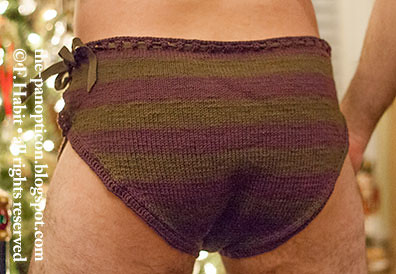
I expected them to be horribly, horribly droopy and ill-fitting. There's no special pouch shaping and no accommodation in the posterior for, um, fullness. The idea is that the stretch and drape of knitted fabric will do it all. And I'll be darned if it doesn't work rather well. The crocheted edge along the leg openings was quick to work and keeps the selvedges from curling. Looks nice and neat, too.

The pure wool Quince and Company Chickadee proved to be a perfect yarn choice. The itch factor even when wet (and no, I am not going to show you photos of that–they have proved impossible to take) was negligible, and while the suit did sag it didn't fall off. I wouldn't wear these in a situation requiring perfect modesty, but as I wrote previously they weren't intended for such a situation.
Another score for Weldon and Company. Turns out they knew what they were doing after all.
